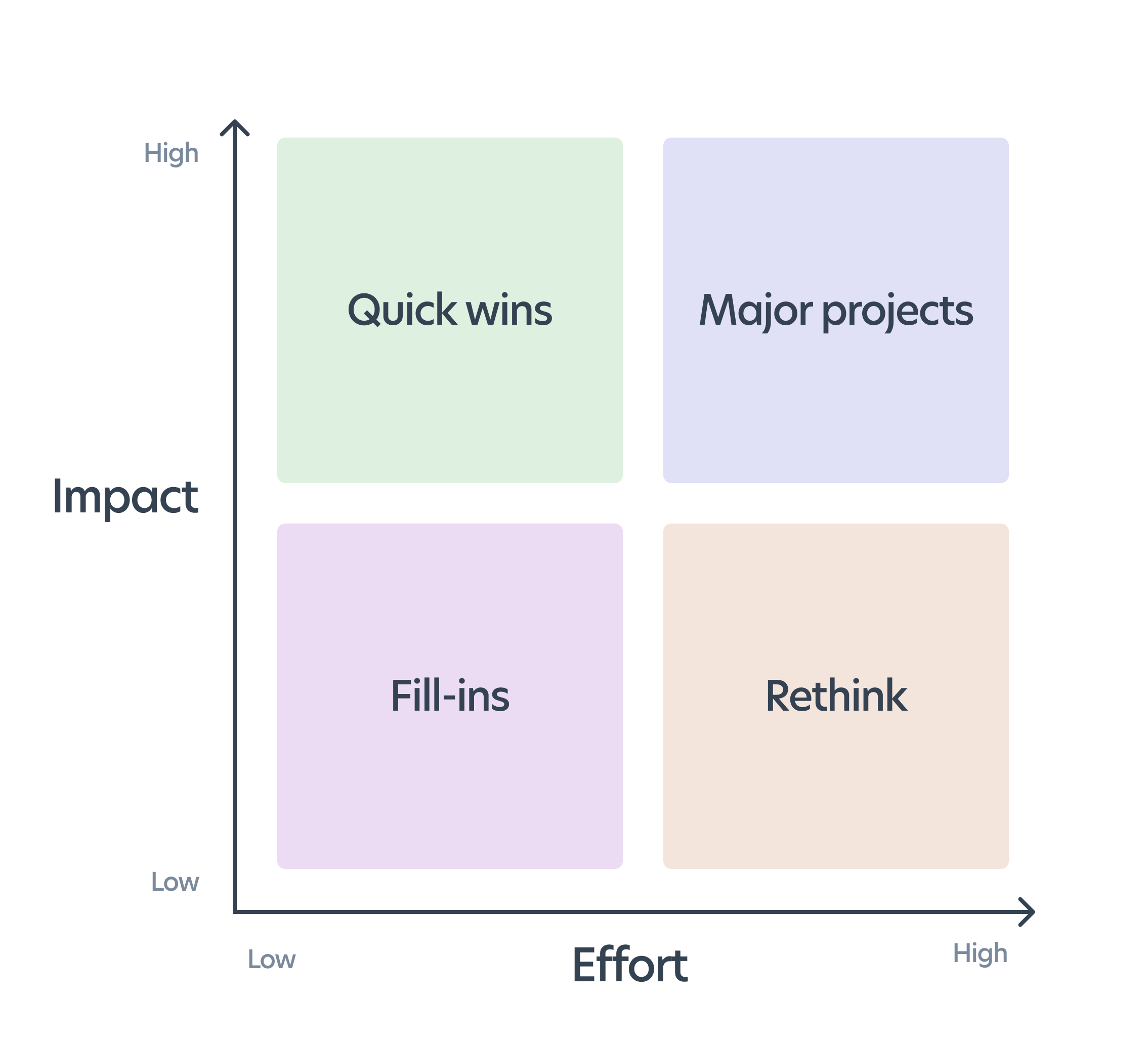Impact vs effort prioritization is usually a good place to start for organizations or teams that haven’t used a formal model for prioritizing and want to quickly establish rough priority for a large backlog of tasks.
Additionally, most teams intuitively use impact and effort to roughly prioritize tasks and label them (e.g. highest, high, medium, etc.) in their planning software before using a more refined model to prioritize tasks more scientifically. The tool for this model is called the impact/effort matrix.
To use the matrix:
- Draw an impact/effort chart on a large board, wall, or digital whiteboard tool (e.g. Miro).
- The Y-axis represents impact and the X-axis represents effort.
- Plot the tasks on the matrix based on context and current knowledge of the task.
- Draw lines (both figuratively and literally) and move tasks into one of the four categories:
- High-impact / low-effort (i.e. quick wins)
- Low-impact / low-effort (i.e. fill-ins or incremental)
- High-impact / high-effort (i.e. major projects or big bets)
- Low-impact / high-effort (i.e. rethink)

As you can see, the impact/effort matrix is a quick and easy way to establish relative priority for any number of tasks. From here, teams can further refine priority within each category by using another model, the impact/effort matrix again, or by simply voting.
Agile teams usually want to knock out the quick wins (i.e. low-hanging fruit) first, then move on to major projects and intersperse fill-in tasks throughout the sprint. This is akin to the analogy of filling your sprint “jars” with rocks first, then pebbles, and finally sand.
Items falling into the rethink category aren’t necessarily discarded right away, but may need further analysis and additional refinement before value can be seen or justified. Many teams keep these items in the backlog in a “parking lot” status or similar.